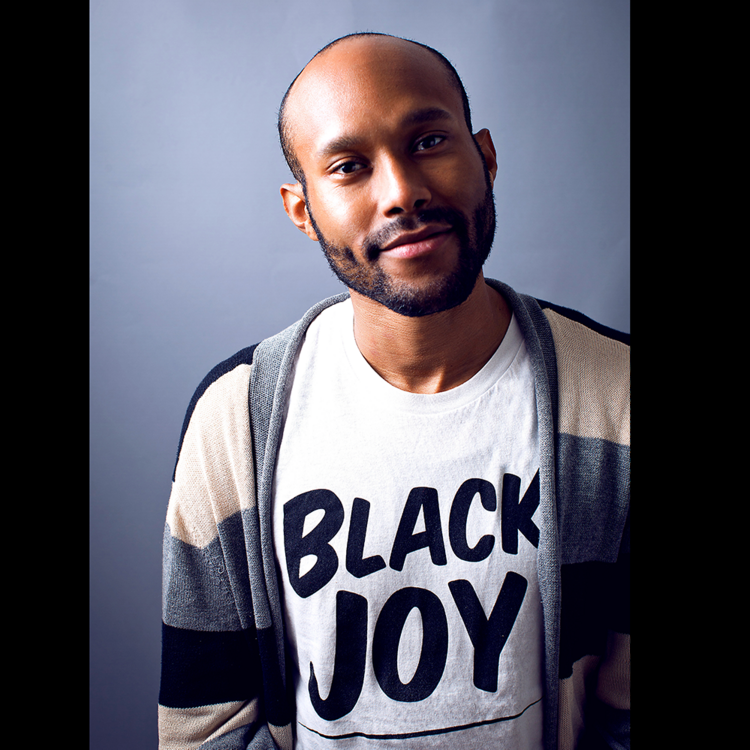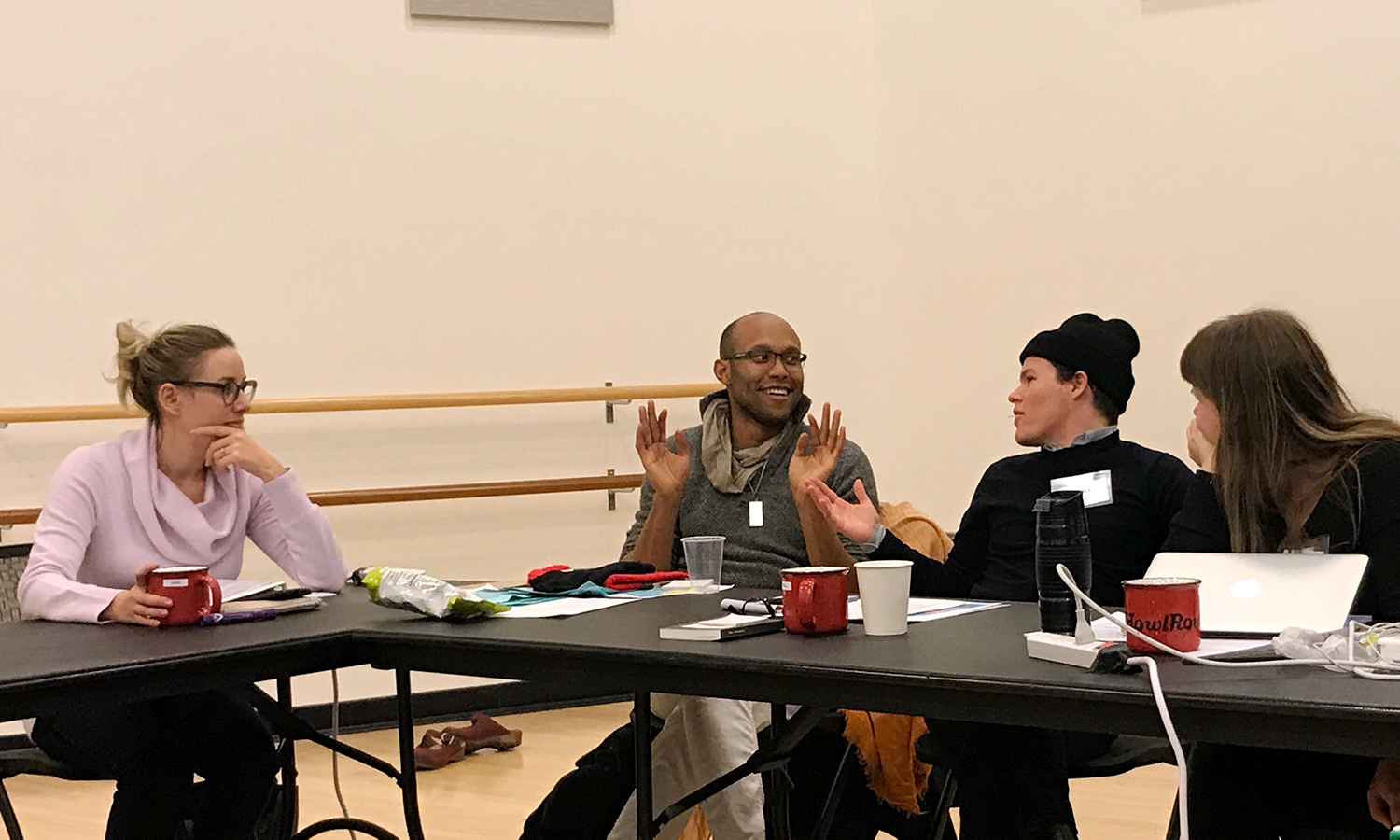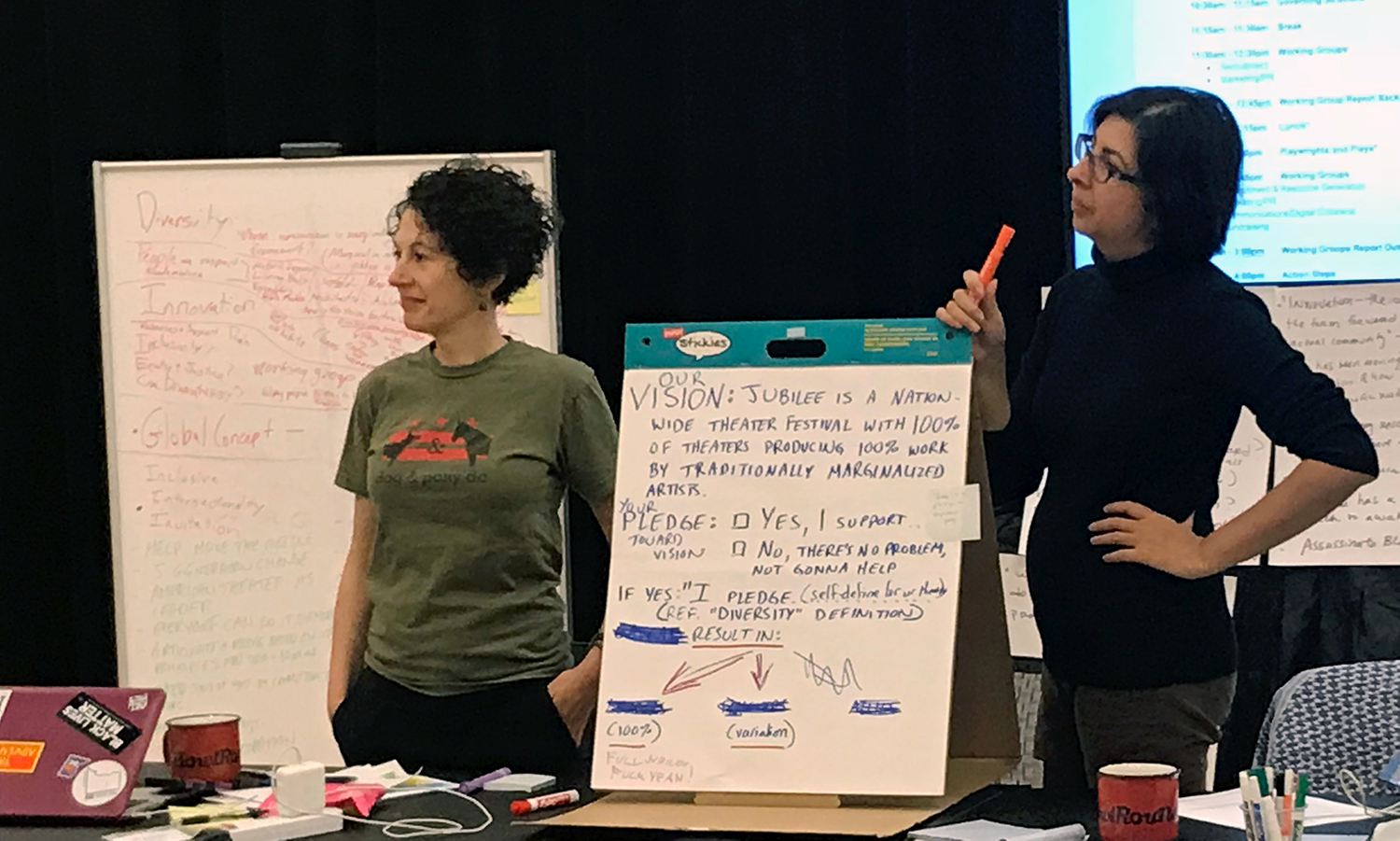Brought together, these two words help to define what a cultural architect can be, yet the term originated for us during a Theatre Communications Group (TCG) conference, centered on revolutionizing the way theatres connect to communities to build their audiences, back in 2015. There, Pastor Mike A. Walrond, a keynote speaker, addressed the crowd of leaders and decision-makers in the American theatre, at one point saying:
You are reimagining what life can look like. You’re reimagining what life can be. Through your gift, through your art, through your touch, you help people see what they may not have been able to see. You help people become what they believe about themselves. You help people be the change they want to see. That is what you do and what a tremendous calling, to be a cultural architect. What a powerful calling to be the person who inspires generations to reimagine their lives and see themselves differently.
These words birthed, for many of us in the room, a nuanced way of participating within our collective communities and contextualizing our work as practitioners. Fast forward to 2017, to the JUBILEE convening co-produced by HowlRound in Boston, when a group of practitioners from around the country, including me, utilized the inspiration conjured within Pastor Mike’s words to think of how the JUBILEE could spotlight the institutions, organizations, and companies in the American theatre that have long been cultivating cultural diversity not because it is sexy or trendy, but because it is a necessity.
It is through their unwavering commitment that society learns how to unite, uplift, and undo anti-phobic work.
The JUBILEE’s completely volunteer-based cohort envisioned to establish an essential initiative highlighting these cultural architects. Cultural architects are organizations that have been producing work of historically marginalized voices for twenty-years or more—with the exception of Native theatre organizations, which, given the historic barrier to their creation, only need to have been around for five years to be considered. They have an unwavering commitment to center, as depicted in their vision or mission, one or more of the communities identified by the JUBILEE. It is through their unwavering commitment that society learns how to unite, uplift, and undo anti-phobic work. The work these inspirational organizations produce and the space they provide for community to converge encourages a cultural exchange and will leave behind a legacy. Simply put: they enrich lives.
A prime example of this enrichment, which I know all too well, is National Black Theatre (NBT), an institution I currently helm as artistic director. NBT—founded fifty-one years ago by a Black women, Dr. Barabara Ann Teer—helped steward, shape, and cultivate space for Black artists. Yielding over three hundred productions, NBT has been a leading voice of the Black Arts Movement, giving birth and sustaining a cultural space for Black creative production in the nation no matter when it was trendy. Without it and institutions like it, so many voices, ideas, and innovations would not have had a home or even possibly been created.
The ambassadors of culture that have historically been marginalized should be able to proclaim their rightful place as cultural architects.
To date, the JUBILEE has been able to recognize twenty-four theatrical entities to be celebrated as cultural architects—and we know there are many more. Before the term “diversity” became a buzzword, these forebears were carving out space with the resources they had to be the ambassadors needed in society, helping people learn, experience, and document the many different ways humanity has loved, expressed joy, struggled, and simply lived. This labor has provided individuals the opportunity to grow and humanity the chance to evolve, and we have an obligation to not whitewash history. The JUBILEE is asking that we as a community—and, particularly, predominantly white institutions (PWIs)—gracefully share the spotlight and provide an asé (thank you) for the ones that labored when the PWIs were too fixated on only reflecting themselves.
These organizations are the ones questioning: How do we allow the true practice of the word “diversity” to be amplified within the American theatre? What does it mean to really hold space for who we are as complex humans to show up? What does it mean to provide space for a particular group of people who have been ignored and allow for their unique brilliance to be recognized as valuable? What does it mean to lead with courage that allows for the human heart to awaken? The way we honor these institutions—which have labored to protect the vulnerable, unseen, and sometimes-erased members of society, and which have really lived these questions—is important.




Comments
The article is just the start of the conversation—we want to know what you think about this subject, too! HowlRound is a space for knowledge-sharing, and we welcome spirited, thoughtful, and on-topic dialogue. Find our full comments policy here